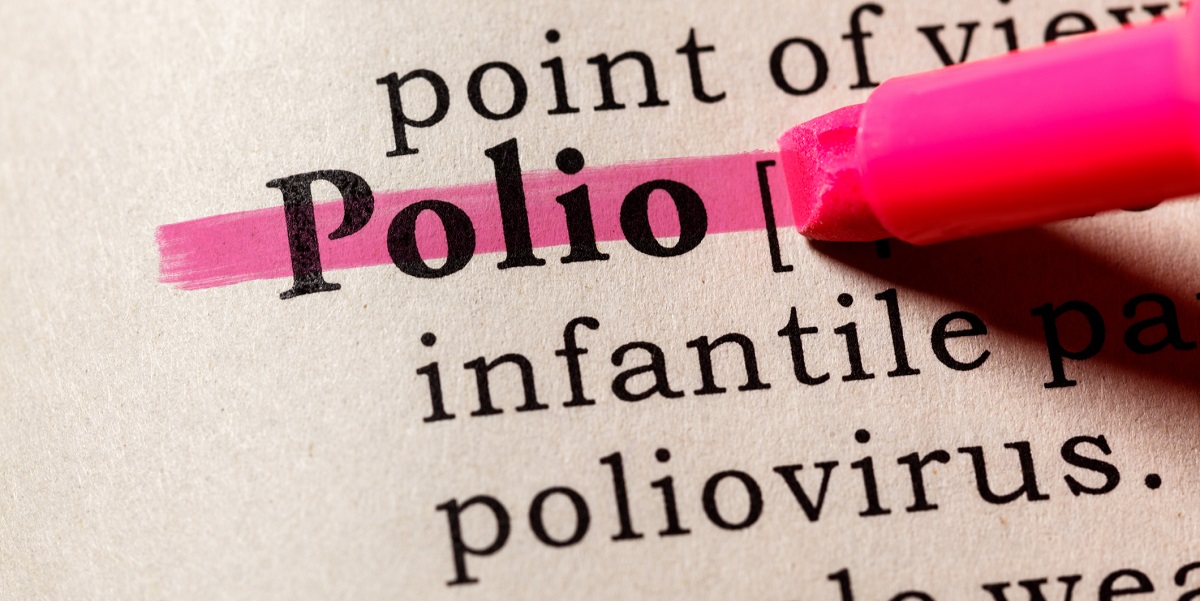Polio

Poliomyelitis (polio) is a potentially paralysing, vaccine preventable, viral infection. The virus is transmitted through food or water contaminated by infected human faeces or by direct contact with an infectious person.
Polio is extremely rare in UK travellers with the last imported case occurring in 1993. Those at increased risk include travellers visiting friends and relatives, those in direct contact with an infected person, long-stay travellers, and those visiting areas of poor sanitation.
In 1988 polio commonly occurred in more than 125 countries on five continents, with more than 1,000 children paralysed every day. Since the launch of the Global Polio Eradication Initiative in 1988, worldwide rates of polio have been reduced by more than 99 percent. The number of countries where polio commonly occurs has declined from 125 to two: Afghanistan and Pakistan. The rest of the world remains at risk of polio importation, with a number countries still reporting imported cases of polio.
Most individuals (about 95 percent) who acquire polio do not develop symptoms. When they do occur symptoms may range from a mild illness with fever, to symptoms of meningitis (inflammation of the lining of the brain) or paralysis. Although paralysis occurs in less than one percent of infections it is frequently long lasting.
Prevention
An effective vaccination against polio is available. In addition to vaccination travellers should ensure good personal hygiene and follow advice on prevention of food and water-borne diseases.
Polio vaccine
The objective of the immunisation programme is to provide a minimum of five doses of a polio-containing vaccine at appropriate intervals for all individuals. For adults and children from 10 years of age, who have not received polio vaccinations in the past, a three dose course of vaccinations can be provided.
Polio vaccine is recommended for:
- All individuals, from two months of age as part of the UK routine immunisation schedule.
- Travellers to areas or countries where there are recent reports of wild polio (see) and their last dose of polio vaccine was given 10 or more years ago.
- Individuals at risk of exposure to polio through their work, e.g. certain healthcare workers and microbiology laboratory staff.
- Certain groups of individuals travelling to countries affected by the WHO temporary recommendations that were initially implemented in May 2014.
In September 2004, inactivated polio vaccines (IPV) replaced oral polio vaccine (OPV) in UK routine vaccine schedules.
Vaccination schedules
| Vaccine | Schedule and age range (in chronological order) |
| The 6-in-1 vaccine (DTaP/IPV/Hib/HepB) | 3 doses given 1 month apart (offered at 2,3,4 months of age) |
| The 4-in-1 vaccine (dTaP/IPV) | Pre-school: single dose (offered at 3 years and 4 months or soon after) |
| The 3-in-1 vaccine (Td/IPV) | Single dose booster (offered at 14 years of age). Also used for adults and children from 10 years of age requiring initial course of 3 doses 1 month apart or travellers requiring single dose booster |
| Boosterix-IPV* (dTaP/IPV) | Single dose booster(for pregnant women 16 to 32 weeks gestation) |
*Recommended for pregnant women between 16 to 32 weeks to protect unborn child against whooping cough (pertussis).
Length of protection
In most circumstances five doses of polio containing vaccine at the appropriate intervals is considered to give satisfactory long-term protection for life in the UK. However travellers to areas or countries where there are recent reports of polio and whose last dose of polio vaccine was 10 or more years ago should be offered a booster dose of a polio containing vaccine. See our Country Information pages for individual country recommendations.
Resources
- More detailed information can be found in our polio factsheet
- Polio vaccination certificate
- UKHSA: Immunisation against infectious disease. Polio
- UKHSA: Polio: guidance, data and analysis
- Further details on the vaccines can be found on the Summary of Product Characteristics (SPC) on the electronic medicines compendium
- World Health Organization: Polio eradication initiative
Explore more
Chikungunya
Chikungunya is a viral infection caused by the chikungunya virus (CHIKV) and is transmitted through the bite of an infected mosquito
Updated: 13 February 2025Middle East respiratory syndrome coronavirus
MERS-CoV is believed to have originated in bats and then spread to camels and has spread to humans from animals
Updated: 20 January 2025Marburg virus disease
Marburg virus is an animal-borne (zoonotic) virus that can cause a severe and often fatal haemorrhagic fever called Marburg virus disease (MVD)
Updated: 20 January 2025Lassa fever
Lassa fever is an infectious disease caused by Lassa virus, a member of the arenavirus family
Updated: 20 January 2025Crimean-Congo haemorrhagic fever
Crimean-Congo haemorrhagic fever (CCHF) is an infectious disease caused by the Crimean-Congo haemorrhagic fever virus (CCHFV)
Updated: 20 January 2025Recent News on Polio
Polio: Public Health Emergency of International Concern
An update on the polio Public Health Emergency of International Concern (PHEIC)
Updated: 11 December 2024Recent Polio Outbreaks
VDPV2 in United Kingdom
As of 10 January 2025, a further vaccine-derived poliovirus type 2 (VDPV2) has been detected in an environmental sewage sample from London collected in December 2024. Please see our Topics in Brief article for further details on polio.
Polio in Israel
As of 25 December 2024, a case of polio has been reported in an unvaccinated 17 year old in Jerusalem. No further details are available of the strain involved. Please see our Topics in Brief article for further details on polio.
VDPV2 in Australia
As of 23 December 2024, vaccine-derived poliovirus type 2 (VDPV2) was identified in routine wastewater sampling in the Melbourne metropolitan area. This is likley to be link to someone who received a live polio vaccine overseas. Please see our Topics in Brief article for further details on polio.
cVDPV2 in South Sudan
As of 18 December 2024, a total of nine cirulating vaccine-derived poliovirus type 2 (cVDPV2) cases have been reported in 2024. Please see our Topics in Brief article for further details on polio.


